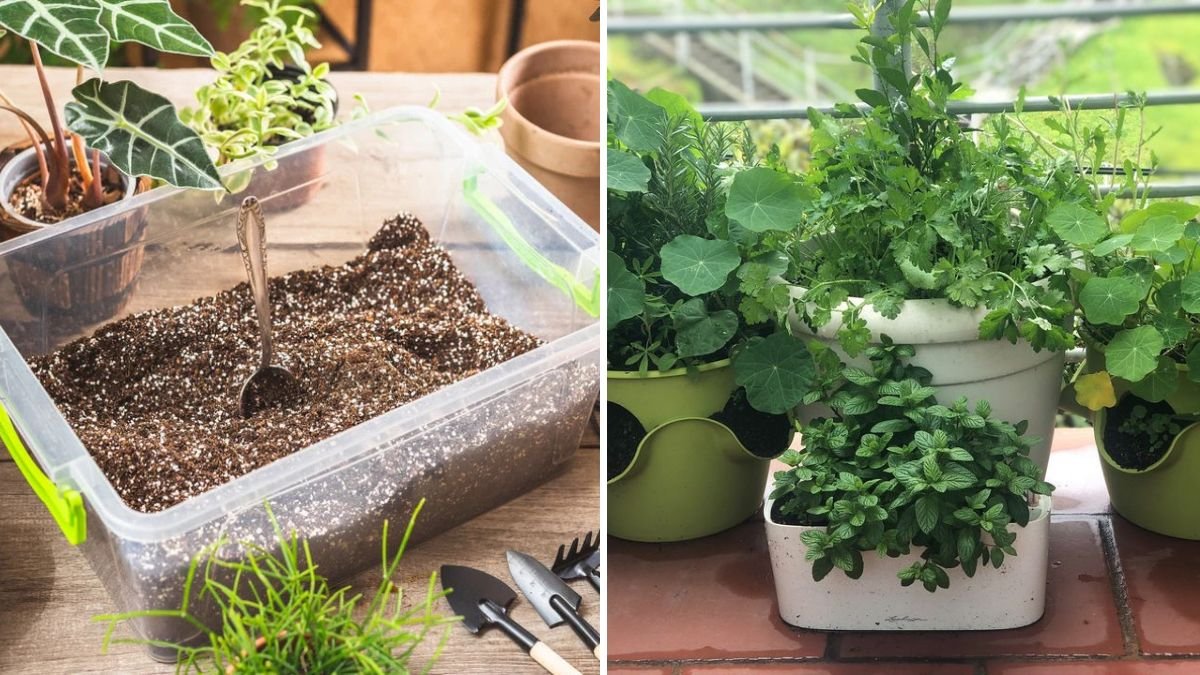Growing vegetables on a balcony offers urban gardeners a unique opportunity to enjoy fresh, nutritious produce without the need for a backyard. However, one of the most crucial factors in container vegetable gardening is the soil mix. A well-prepared soil mix ensures proper drainage, nutrient availability, and root aeration, all of which are essential for healthy plant growth and abundant harvests.
This article explores the components of the best soil mix for balcony vegetables, practical preparation techniques, container considerations, and tips for maintaining soil health throughout the growing season.
1. Why the Right Soil Mix Matters
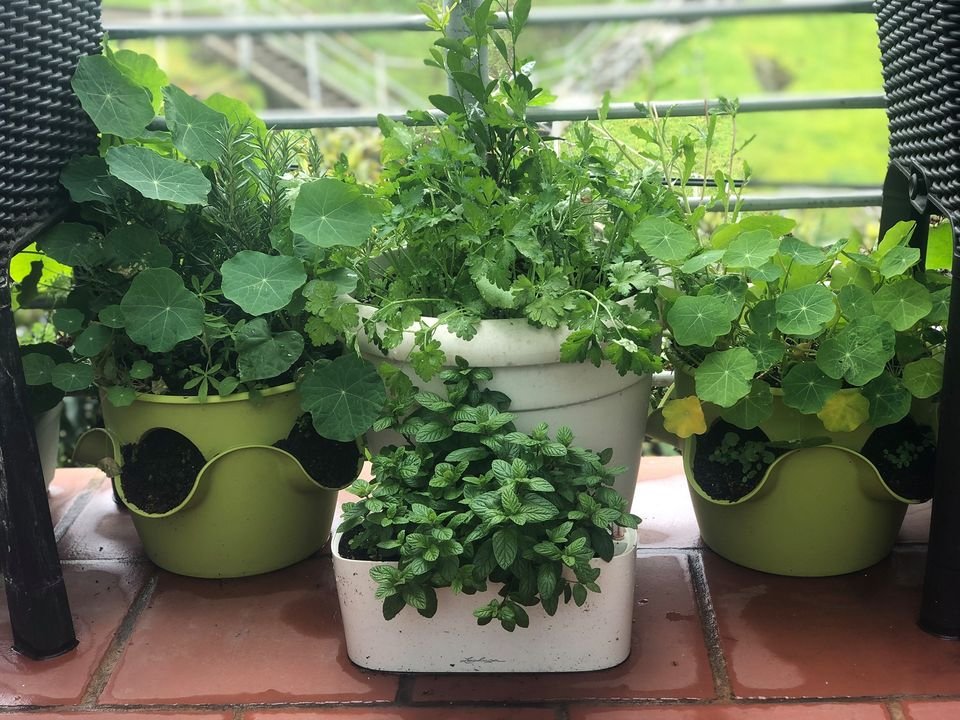
Unlike garden beds, balcony containers limit root space and restrict natural soil processes. The soil mix must therefore:
- Provide adequate drainage to prevent waterlogging and root rot.
- Supply essential nutrients for continuous growth.
- Retain moisture without becoming soggy.
- Maintain a light and fluffy texture to support root expansion and oxygen availability.
Using the wrong soil—such as garden soil or heavy clay—can stunt growth, invite pests, and reduce yields.
2. Components of an Ideal Balcony Vegetable Soil Mix
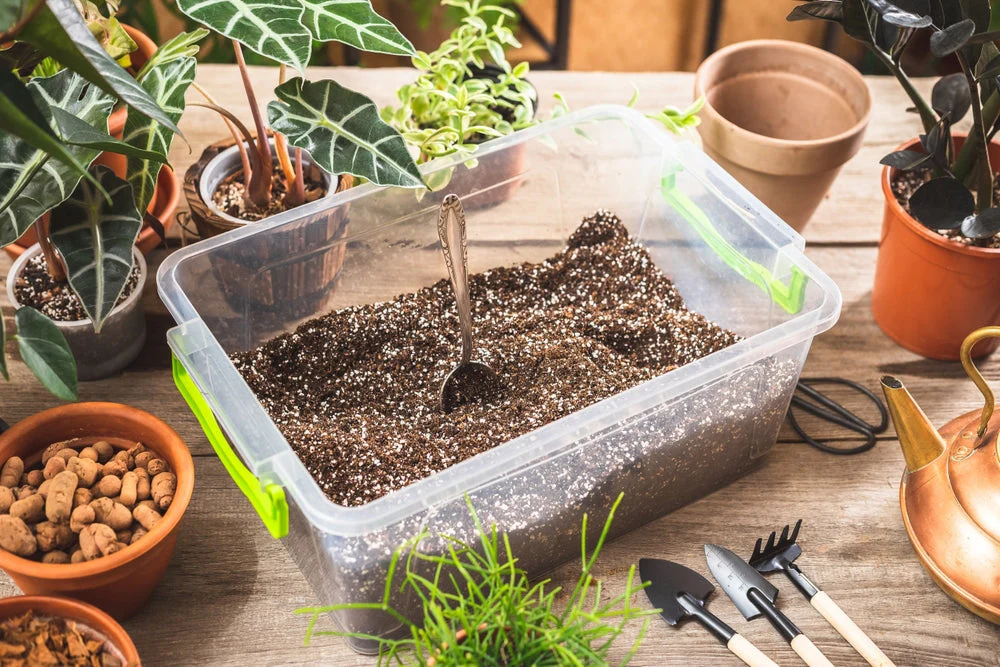
An effective soil mix balances drainage, fertility, and aeration. Common components include:
a. Potting Mix
- Lightweight, sterile, and designed for container gardening.
- Provides a base structure for drainage and root support.
- Avoid plain garden soil, which compacts easily in pots.
b. Organic Compost
- Supplies slow-release nutrients essential for vegetable growth.
- Improves water retention while enhancing soil structure.
- Promotes beneficial microbial activity.
c. Coco Peat (Coir)
- Retains moisture without waterlogging.
- Improves aeration and reduces soil compaction.
- Environmentally friendly alternative to peat moss.
d. Perlite or Vermiculite
- Perlite improves drainage and prevents soil compaction.
- Vermiculite retains moisture and nutrients while allowing aeration.
- Often combined in a 1:1 ratio depending on the plant’s water needs.
e. Sand (Optional)
- Coarse sand enhances drainage for moisture-sensitive vegetables like tomatoes, peppers, and eggplants.
- Prevents water stagnation and promotes strong root growth.
By combining these components, you can create a balanced, nutrient-rich soil tailored for container vegetables.
3. Basic Soil Mix Ratios for Balcony Vegetables
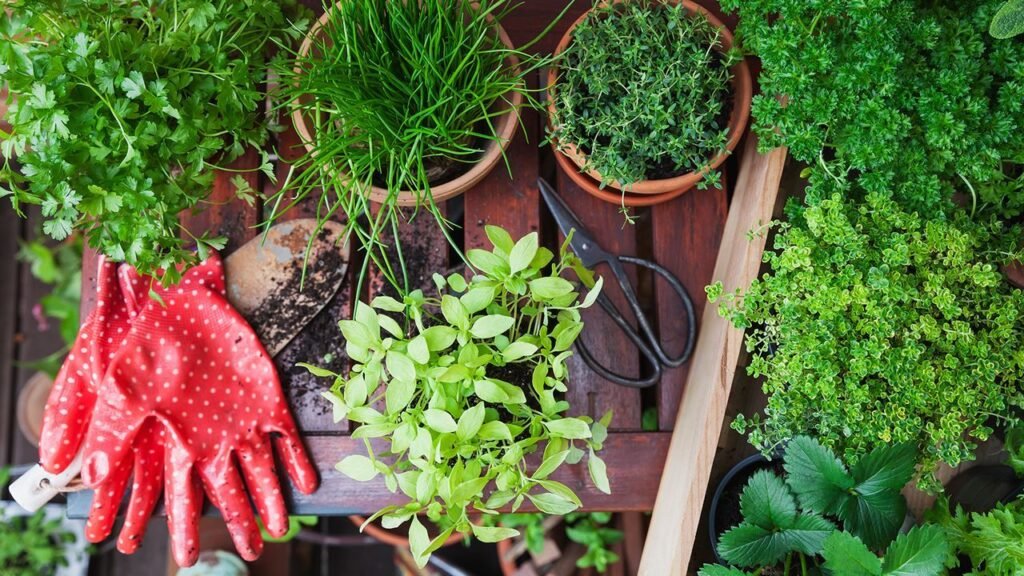
A typical all-purpose mix for most balcony vegetables might include:
- 40% potting mix – provides bulk and structure.
- 30% organic compost – delivers nutrients and microbial activity.
- 20% coco peat or peat moss – enhances moisture retention.
- 10% perlite or vermiculite – improves aeration and drainage.
Adjust ratios based on the type of vegetable:
- Leafy greens (spinach, lettuce): Slightly more compost for nutrient richness.
- Fruit-bearing vegetables (tomatoes, peppers): Increase perlite for better drainage.
- Root vegetables (carrots, radishes): More sand or coarse material for loose soil to allow root expansion.
4. Preparing Soil Mix for Balcony Containers
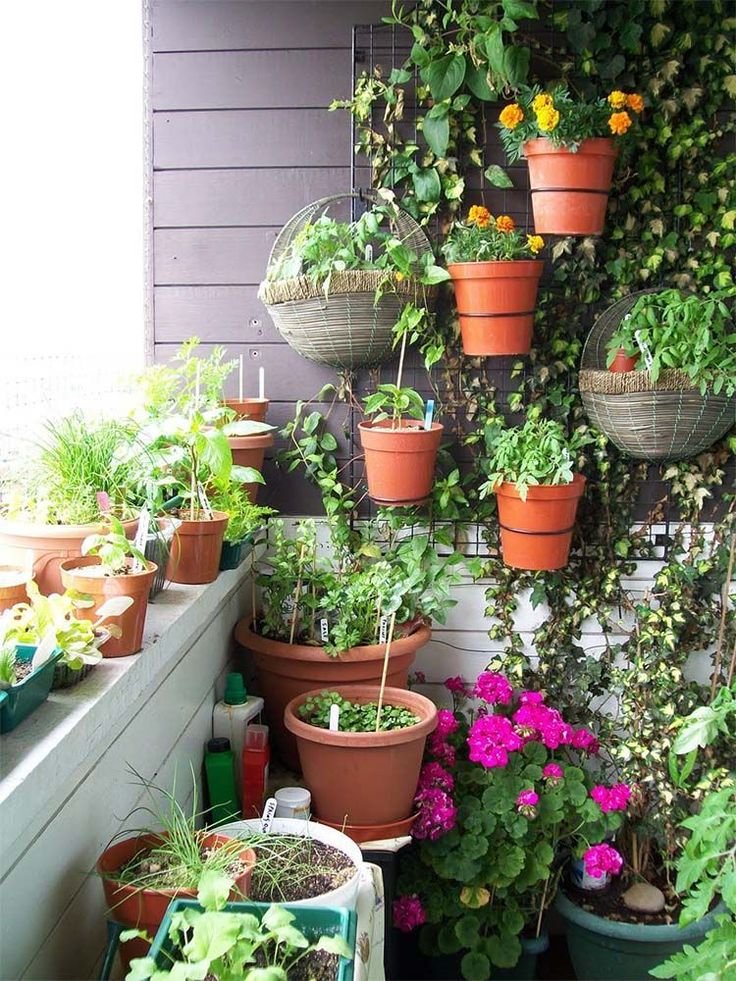
Proper preparation ensures uniform consistency and prevents issues later:
- Sift the compost and soil: Remove clumps, sticks, or debris.
- Mix thoroughly: Combine potting mix, compost, coco peat, and perlite evenly.
- Moisten before planting: Lightly damp soil improves seed germination and transplant success.
- Test drainage: Pour water to ensure it drains quickly without pooling. Adjust perlite or sand as needed.
Prepared soil reduces plant stress, encourages root development, and ensures healthy, productive vegetables.
5. Container Considerations
Container choice and soil go hand-in-hand:
- Size: Deep containers for root vegetables; medium depth for leafy greens; larger pots for tomatoes and peppers.
- Material: Terracotta, plastic, or metal; terracotta allows evaporation, plastic retains moisture longer.
- Drainage: Ensure holes at the bottom to prevent waterlogging. Consider adding a layer of gravel or broken terracotta at the base for extra drainage.
Matching the soil mix to container size ensures optimal root growth and plant health.
6. Nutrient Supplementation
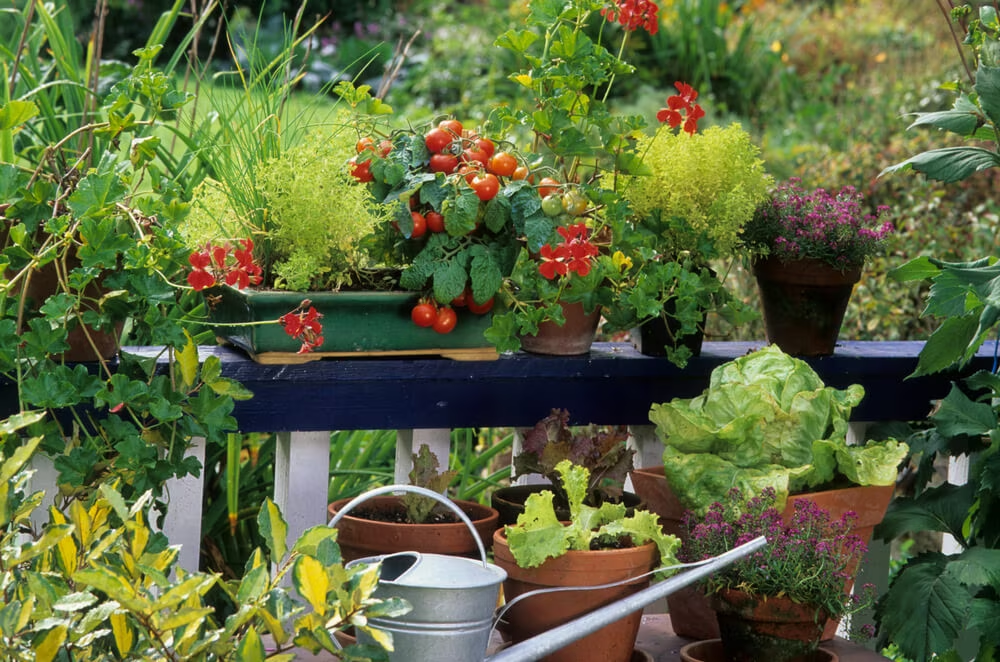
Even the best soil mix requires occasional supplementation for sustained yields:
- Organic Fertilizers: Compost tea, fish emulsion, or vermicompost boost nutrients.
- Slow-Release Fertilizers: Granules provide consistent feeding over several weeks.
- Liquid Fertilizers: Balanced NPK solutions applied every 2–3 weeks encourage leaf and fruit growth.
- Micronutrients: Magnesium, calcium, and iron can be added depending on plant requirements.
Regular supplementation prevents nutrient deficiencies, leading to stronger, healthier vegetables.
7. Water Retention and Moisture Management
Container vegetables are more sensitive to moisture fluctuations:
- Mulching: Apply organic mulch (straw, shredded leaves, or coconut husk) to reduce evaporation.
- Consistent Watering: Water deeply when the top 1–2 inches of soil dry out.
- Self-Watering Containers: Consider using wicking systems or reservoirs for consistent moisture, especially in summer.
- Monitor Soil Moisture: Use a moisture meter to prevent overwatering or underwatering.
Proper moisture management enhances root health and nutrient uptake, resulting in higher yields.
8. Seasonal Adjustments
The ideal soil mix and maintenance vary by season:
- Spring/Summer: Warm, fast-growing season requires regular watering and fertilization. Consider adding extra compost for nutrient-hungry plants.
- Autumn/Winter: Cool-season vegetables like spinach and kale need slightly less fertilization and watering. Protect containers from frost by insulating or moving indoors.
- Rainy Season: Ensure drainage is excellent to prevent soil saturation and root rot. Elevate containers if necessary.
Seasonal adjustments ensure year-round productivity and plant health.
9. Common Soil Issues and Solutions
Even with the best soil mix, problems can occur:
- Compaction: Occurs over time; aerate with a fork or replace top layers.
- Nutrient Deficiency: Yellowing leaves or poor growth indicate missing nutrients; supplement with organic or chemical fertilizers.
- Pest Attraction: Overly moist soil may attract fungus gnats; adjust watering and add neem oil treatment if necessary.
- Salinity: Excess fertilizer can cause salt build-up; flush containers periodically with clean water.
Regular monitoring and proactive solutions maintain soil quality and vegetable productivity.
10. Benefits of Using a Customized Balcony Soil Mix
A well-prepared soil mix offers numerous advantages:
- Optimal Drainage: Prevents root rot and promotes healthy growth.
- Nutrient-Rich: Supports continuous harvests of vegetables.
- Moisture Retention: Ensures plants thrive between waterings.
- Enhanced Root Aeration: Strong roots improve overall plant health.
- Disease Resistance: Healthy soil encourages beneficial microbes, reducing plant stress and disease susceptibility.
Investing time in the right soil mix pays off in healthier plants and abundant yields.
Conclusion
The best soil mix for balcony vegetables combines drainage, fertility, moisture retention, and aeration to support plant health and productivity. Key components include potting mix, compost, coco peat, perlite, and optional sand, mixed in appropriate ratios tailored to the type of vegetable grown.
By preparing the soil properly, choosing suitable containers, providing adequate nutrients, and maintaining proper watering, gardeners can enjoy thriving, year-round vegetable gardens even in limited spaces. Seasonal adjustments, mulching, and proactive pest management further enhance yields and sustainability.
A carefully constructed soil mix transforms a balcony into a productive, green, and healthy oasis, demonstrating that urban gardening is possible and rewarding with the right preparation and care.
